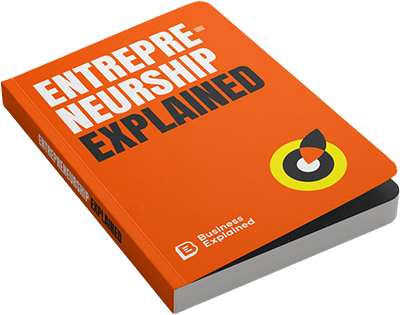Table of Contents
- What is diversity recruiting?
- Why is it important to have a diversity recruitment strategy?
- Diversity recruiting strategy examples
- How do you ensure you are following the diversity recruiting best practices?
- What is a diversity recruiting plan, and what should it contain?
- Which types of diversity should you have in mind?
Diversity and inclusion have become more than just buzzwords—they are essential to successful business strategies. Companies that prioritize diversity in their recruitment practices are better equipped to foster innovation, drive employee engagement, and achieve long-term profitability. However, creating a truly diverse workforce requires more than good intentions; it demands a well-thought-out and actionable diversity recruitment strategy.
This comprehensive guide explores everything you need to know about diversity recruitment strategies, including what diversity recruiting is, why it’s essential, and how to implement effective strategies to build a more inclusive workforce.
What is diversity recruiting?
Diversity recruiting is the strategic search and employment of people with different backgrounds, races, ethnicities, ages, genders, abilities, sexual orientations, and other distinctive individual characteristics. It is a method beyond regular hiring processes in such a way that it brings inclusion into the workplace by valuing different perspectives. It intends to build a workforce that mirrors the vast array of people in society to foster creativity, problem-solving, and innovation within the organization.
Diversity recruiting means being aware of these biases and how to cleanse them in job postings, candidate assessments, interview practices, etc. Embracing diversity recruitment strategies means embracing the view that every candidate will have an equal opportunity to succeed.
According to a 2023 McKinsey report, companies with greater gender and ethnic diversity are 39% more likely to have above-average profitability than their less-diverse counterparts. This statistic underscores the tangible benefits of diversity, not only in terms of social equity but also in driving business success. A diverse workforce can bring different perspectives and ideas, leading to more innovative solutions and a better understanding of the diverse customer base, ultimately contributing to the company’s success.
The concept of diversity recruiting is a subset of the overall umbrella practice known as DEI: diversity, equity, and inclusion. Strategies for DEI recruiting are intended to be fair and devoid of any barriers that may prevent specific groups from being represented proportionately within the workforce. Those strategies include proactive sourcing of diverse candidates, ensuring diversity in the interview process, and creating a company culture embracing inclusivity.
Underlining its relevance, diversity recruitment is not a trend but a vital component of modern human resources practice, which you can learn more about in our e-book Human Resources Explained. As businesses go more global, the various perspectives and ideas that come with having a diverse team could prove highly advantageous. In addition, workforce diversity will help an organization better understand and serve its diverse customer base.
Why is it important to have a diversity recruitment strategy?
A diversity recruitment strategy is crucial for several reasons, both from a moral and business perspective. Firstly, a diverse workforce fosters a more inclusive and supportive workplace culture. Employees who feel valued and included are likelier to be engaged, productive, and loyal to the company. Human Resources Explained, in turn, reduces turnover rates and saves the organization the costs associated with recruiting and training new hires.
A well-defined diversity recruitment strategy also enhances the company’s reputation. In today’s socially conscious world, customers and job seekers are increasingly considering how companies address diversity and inclusion. Organizations known for their commitment to diversity often attract top talent seeking an environment where they can thrive, regardless of their background.
Moreover, diversity in the workplace leads to better decision-making and problem-solving. Diverse teams can solve problems faster than teams composed of individuals with similar backgrounds. Diversity brings together different viewpoints and experiences, leading to more creative and effective solutions.
Another critical aspect of diversity recruiting is its role in driving innovation. Diverse teams are more likely to develop novel ideas and approaches, giving the company a competitive edge in the market. Companies like Google and Microsoft have long recognized diversity’s value and implemented comprehensive diversity hiring strategies to foster innovation.
Additionally, having a diversity recruitment strategy is essential for compliance with legal and regulatory requirements. In many countries, laws are in place to prevent discrimination in hiring, and companies must demonstrate that they are taking steps to ensure equal opportunities for all candidates. Failure to do so can result in legal consequences and damage to the company’s brand.
Lastly, from an ethical standpoint, diversity recruitment aligns with the principles of fairness and equality. It ensures everyone has an equal chance to succeed regardless of background. This helps build a more just society and aligns with the values of many modern organizations.

Diversity recruiting strategy examples
Diversity recruitment strategies can vary widely depending on the organization’s goals, industry, and specific challenges. However, several proven strategies can be adopted by companies to enhance their diversity hiring efforts.
One effective strategy is diversifying the talent pool by sourcing candidates from non-traditional channels. This includes partnering with organizations focusing on underrepresented groups, such as women in technology or veterans, and attending career fairs catering to diverse populations. For example, companies like IBM and Accenture have partnered with historically black colleges and universities (HBCUs) to recruit African American students for their tech roles.
Another strategy is to implement bias-free hiring practices. This involves training recruiters and hiring managers to recognize and mitigate unconscious biases that may influence their decisions. Techniques such as blind recruitment, where candidate names and other identifying information are removed from resumes, can also help to prevent bias. Studies have shown that blind recruitment can increase the chances of diverse candidates advancing in the hiring process.
Employee resource groups (ERGs) can also significantly influence diversity recruitment. ERGs are voluntary, employee-led groups formed around shared characteristics or life experiences. These groups can provide valuable insights into the needs and challenges of diverse employees and help shape more inclusive hiring practices. Companies like PepsiCo and Google have used ERGs to connect with diverse talent and improve recruitment strategies.
Referral programs encouraging employees to refer candidates from underrepresented groups can be another powerful tool. Research from the National Bureau of Economic Research suggests that referrals tend to produce more successful hires. By incentivizing referrals from diverse backgrounds, companies can tap into networks they might need access to through traditional recruitment channels.
Internship and mentorship programs targeted at underrepresented groups are also highly effective in building a pipeline of diverse talent. Programs like Google’s Code Next and Facebook’s University Recruiting focus on providing opportunities for students from underrepresented backgrounds to gain experience in the tech industry. These programs help diversify the workforce and develop the next generation of leaders.
Lastly, companies should regularly review and update their job descriptions to ensure they are inclusive and not deter diverse candidates. Using gender-neutral language and emphasizing the company’s commitment to diversity and inclusion can make job postings more appealing to a broader range of candidates.
How do you ensure you are following the diversity recruiting best practices?
Ensuring your organization follows diversity recruiting best practices requires a proactive and continuous approach. It’s not enough to simply set diversity hiring goals; companies must actively work towards creating an inclusive hiring process that supports those goals
One of the first steps in following diversity recruiting best practices is to conduct a comprehensive audit of your current hiring processes. This involves analyzing recruitment data to identify potential biases or disparities in how candidates from different backgrounds are evaluated and selected. For example, examining the stages at which diverse candidates drop out of the hiring process can provide insights into where improvements are needed.
Training is another critical component of diversity recruiting best practices. All individuals involved in the hiring process, from recruiters to hiring managers, should receive training on unconscious bias and cultural competence. This training helps to ensure that all candidates are evaluated based on their skills and qualifications rather than preconceived notions or stereotypes.
Implementing structured interviews is also a best practice in diversity recruiting. Structured interviews involve asking all candidates the same questions, reducing the likelihood of bias influencing the evaluation process. They are one of the most reliable methods for predicting job performance and help ensure a fair and consistent evaluation of all candidates
Another best practice is establishing clear diversity recruitment metrics and regularly monitoring progress against these metrics. This could include tracking the diversity of candidate pools, the percentage of diverse candidates who advance through each stage of the hiring process, and the retention rates of diverse employees. By regularly reviewing these metrics, companies can identify areas for improvement and make data-driven decisions to enhance their diversity recruitment strategies.
It’s also essential to foster an inclusive company culture that supports diversity beyond just the hiring process. This means creating an environment where all employees feel valued and included, which can be achieved through initiatives like diversity training, employee resource groups, and inclusive leadership practices. An inclusive culture not only helps retain diverse talent but also attracts new candidates looking for a supportive and welcoming workplace.
Finally, companies should seek employee feedback on the effectiveness of their diversity recruitment efforts. Surveys, focus groups, and exit interviews can provide valuable insights into how current and former employees perceive the organization and where there may be opportunities for improvement
What is a diversity recruiting plan, and what should it contain?
A diversity recruiting plan outlines an organization’s steps to attract, hire, and retain a diverse workforce. It is a roadmap for implementing diversity recruitment strategies and ensuring the company meets its diversity and inclusion goals.
At the core of a diversity recruiting plan is a clear definition of the organization’s diversity and inclusion objectives. These objectives should align with the company’s overall mission and values and be specific, measurable, achievable, relevant, and time-bound (SMART). For example, an objective might be to increase the percentage of women in leadership roles by 20% over the next three years.
The plan should also outline the key strategies that will be used to achieve these objectives. This could include specific recruitment initiatives, such as partnerships with diversity-focused organizations, targeted outreach to underrepresented groups, and implementing bias-free hiring practices. Each strategy should be clearly defined, with details on how it will be executed, who will be responsible for it, and how success will be measured.
A diversity recruiting plan should also include a timeline for implementing the various strategies and achieving the defined objectives. This timeline should be realistic, and the resources and support needed to carry out the plan effectively should be considered.
Another critical component of the diversity recruiting plan is the establishment of accountability measures. These include assigning roles and responsibilities for diversity recruiting efforts, regularly reviewing progress, and holding leaders and managers accountable for meeting diversity goals.
Metrics and diversity KPIs (Key Performance Indicators) are essential for measuring the success of the diversity recruiting plan. These metrics include the diversity of the candidate pool, the percentage of diverse hires, the retention rates of diverse employees, and employee satisfaction scores related to diversity and inclusion. Regularly tracking and analyzing these metrics can help the organization make data-driven decisions and adjustments to the plan as needed.
The plan should also include communication strategies to ensure that all employees know the organization’s commitment to diversity and how they can contribute to these efforts. This might involve regular updates from leadership, training sessions on diversity and inclusion, and opportunities for employees to provide feedback on the plan.
Finally, a diversity recruiting plan should be a living document that is regularly reviewed and updated to reflect changes in the organization’s goals, the external environment, and the effectiveness of the strategies being implemented. This continuous improvement ensures that the organization remains committed to diversity and inclusion over the long term.
Which types of diversity should you have in mind?
When developing and implementing diversity recruitment strategies, it’s essential to consider the various types of diversity that contribute to a well-rounded and inclusive workforce. Companies can create a more dynamic and innovative work environment by understanding and addressing these different types of diversity.
- Race and Ethnicity – racial and ethnic diversity is one of the most recognized forms of diversity in the workplace. It involves ensuring representation from different racial and ethnic groups, enhancing cultural understanding, and leading to better decision-making. According to a McKinsey report we discussed in the text above, companies in the top quartile for racial and ethnic diversity are nearly 40% more likely to have above-average profitability. This statistic highlights the value of racial and ethnic diversity in driving business success.
- Gender – gender diversity refers to having a balanced representation of men, women, and non-binary individuals in the workforce. Gender diversity is crucial for promoting equality and ensuring that different gender perspectives are considered in decision-making. A study by Harvard found that companies with a higher percentage of women in executive positions tend to be more open to change and less open to risk.
- Age – age diversity involves having a mix of employees from different age groups, from younger workers just entering the workforce to older employees with years of experience. A multigenerational workforce can benefit from the fresh perspectives of younger employees and the wisdom and experience of older employees.
- Disability – including people with disabilities in the workforce is another critical aspect of diversity. People with disabilities bring unique experiences and problem-solving abilities to the table. Moreover, creating an inclusive environment for employees with disabilities can improve company culture and attract top talent.
- Sexual orientation and gender identity – ensuring representation of LGBTQ+ individuals is vital for fostering an inclusive work environment where everyone feels valued. Companies that support LGBTQ+ inclusion often see higher employee satisfaction and loyalty levels. Companies with LGBTQ+-inclusive policies are more likely to attract and retain top talent as employees increasingly seek workplaces that align with their values.
- Cultural background – cultural diversity involves having employees from different cultural or national backgrounds. This type of diversity is essential for companies operating in global markets, as it allows them to understand better and cater to diverse customer bases. A culturally diverse workforce can also foster creativity and innovation, as employees bring different perspectives and approaches to problem-solving.
- Educational background – educational diversity refers to having employees with different levels of education and from various academic disciplines. This diversity can lead to more well-rounded teams with a broader range of skills and knowledge. For example, a team of STEM graduates and those with liberal arts degrees can approach challenges from both technical and creative angles.
- Socioeconomic background – socioeconomic diversity involves considering employees’ economic and social backgrounds. Individuals from different socioeconomic backgrounds bring unique insights and experiences that can contribute to more innovative solutions and a more inclusive workplace culture.
- Neurodiversity – neurodiversity includes individuals with neurological differences, such as autism, ADHD, dyslexia, and others. Neurodiverse individuals often have exceptional talents and strengths that can be highly valuable in the workplace. Companies like Microsoft and SAP have launched neurodiversity hiring programs, recognizing the unique contributions these individuals can make to innovation and problem-solving.
- Religious beliefs – respecting and accommodating different religious beliefs is another essential aspect of workplace diversity. A diverse workforce that includes individuals of various faiths can enhance cultural sensitivity and promote an inclusive environment where everyone feels respected and valued. Providing accommodations for religious practices, such as prayer spaces or flexible scheduling, can help create a more supportive workplace.
Considering all these types of diversity when crafting a diversity recruitment strategy is crucial for building a truly inclusive workforce. Each form of diversity brings perspectives, skills, and experiences, contributing to a more prosperous and more dynamic work environment.
Companies can build a more inclusive, innovative, and successful workforce by implementing and continuously refining diversity recruitment strategies. Diversity recruiting is not just about meeting quotas or checking boxes; it is about creating a workplace where everyone can thrive and contribute to the organization’s success.


 Risk-free Purchase: Full refund within 14 days
Risk-free Purchase: Full refund within 14 days



